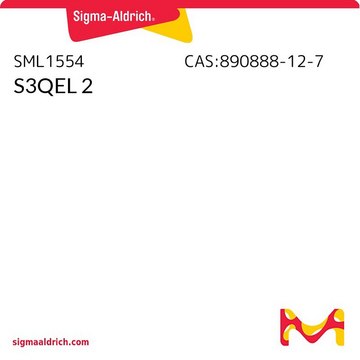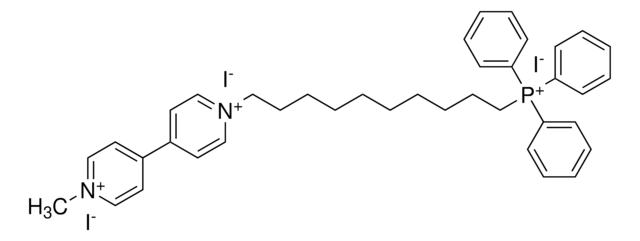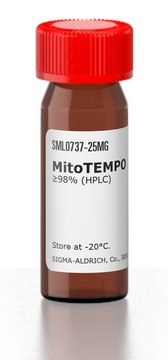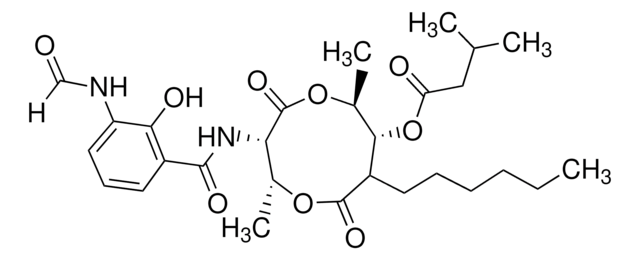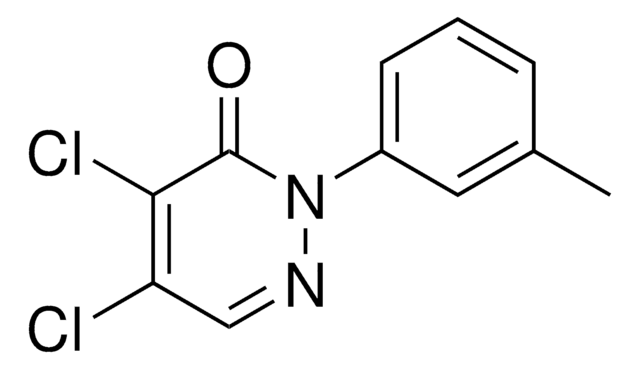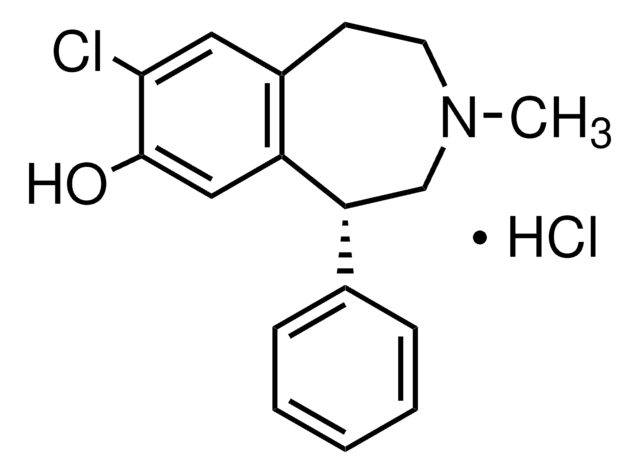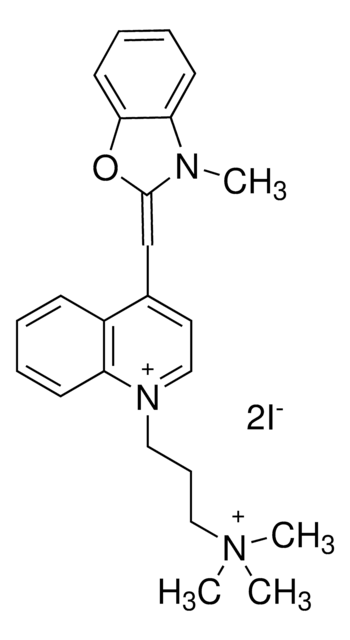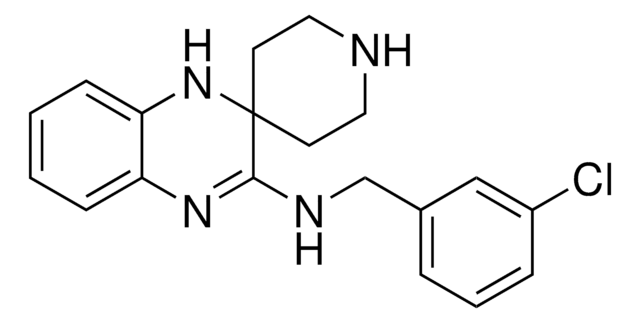推荐产品
质量水平
方案
≥98% (HPLC)
表单
powder
颜色
white to beige
溶解性
DMSO: 2 mg/mL, clear
运输
wet ice
储存温度
−20°C
SMILES字符串
CC1=C(CCNC(C(NC2=CC=CC(NC(C)=O)=C2)=O)=O)SC(C3=CC=C(C)C=C3)=N1
InChI
1S/C23H24N4O3S/c1-14-7-9-17(10-8-14)23-25-15(2)20(31-23)11-12-24-21(29)22(30)27-19-6-4-5-18(13-19)26-16(3)28/h4-10,13H,11-12H2,1-3H3,(H,24,29)(H,26,28)(H,27,30)
InChI key
BFNBJUBXXJKBFN-UHFFFAOYSA-N
应用
S1QEL1.1 has been used as a reverse electron transport (RET)-induced mitochondrial (mito) reactive oxygen species (ROS) suppressor:
- to investigate the role of mitochondrial-derived superoxide in triggering ferroptosis
- to study the mechanism involved in the regulation of anti-fungal responses of macrophages against Aspergillus infection
- in combination with mito-antioxidant to study their influence on mitochondria-derived H2O2 in cancer cells
- to determine the effect of oxidative stress depletion on myoblast differentiation
生化/生理作用
S1QEL1.1 is a suppressor of mitochondrial respiratory complex I site IQ electron leak, suppressing superoxide and/or H2O2 production without altering oxidative phosphorylation. S1QEL1.1 had an IC50 values of 70 nM against superoxide-H2O2 production from site IQ. It decreased caspase activation in a in a cardiomyocyte cell model of ER stress and decreased ischemia-reperfusion injury in the Langendorff-perfused mouse heart model.
Suppressors of the site IQ electron leak (S1QEL)1.1 reduces cytokine secretion and fungicidal activity of macrophages infected with swollen A. fumigatus conidia by suppressing reverse electron transport (RET)-induced mitochondrial reactive oxygen species (ROS).
储存分类代码
11 - Combustible Solids
WGK
WGK 3
闪点(°F)
Not applicable
闪点(°C)
Not applicable
从最新的版本中选择一种:
分析证书(COA)
Lot/Batch Number
Martin D Brand et al.
Cell metabolism, 24(4), 582-592 (2016-09-27)
Using high-throughput screening we identified small molecules that suppress superoxide and/or H
Hyewon Kong et al.
Science advances, 6(45) (2020-11-06)
Mitochondria-derived reactive oxygen species (mROS) are required for the survival, proliferation, and metastasis of cancer cells. The mechanism by which mitochondrial metabolism regulates mROS levels to support cancer cells is not fully understood. To address this, we conducted a metabolism-focused
Takujiro Homma et al.
Archives of biochemistry and biophysics, 700, 108775-108775 (2021-01-26)
Ferroptosis is a type of iron-dependent, non-apoptotic cell death, which is typically induced by cysteine starvation or by the inhibition of glutathione peroxidase 4 (GPX4) activity with the accompanying elevation in lipid peroxidation product levels. Despite the central role of
Remi Hatinguais et al.
Frontiers in immunology, 12, 641495-641495 (2021-04-13)
Reactive Oxygen Species (ROS) are highly reactive molecules that can induce oxidative stress. For instance, the oxidative burst of immune cells is well known for its ability to inhibit the growth of invading pathogens. However, ROS also mediate redox signalling
Andrew G Manford et al.
Cell, 183(1), 46-61 (2020-09-18)
Metazoan organisms rely on conserved stress response pathways to alleviate adverse conditions and preserve cellular integrity. Stress responses are particularly important in stem cells that provide lifetime support for tissue formation and repair, but how these protective systems are integrated
我们的科学家团队拥有各种研究领域经验,包括生命科学、材料科学、化学合成、色谱、分析及许多其他领域.
联系技术服务部门